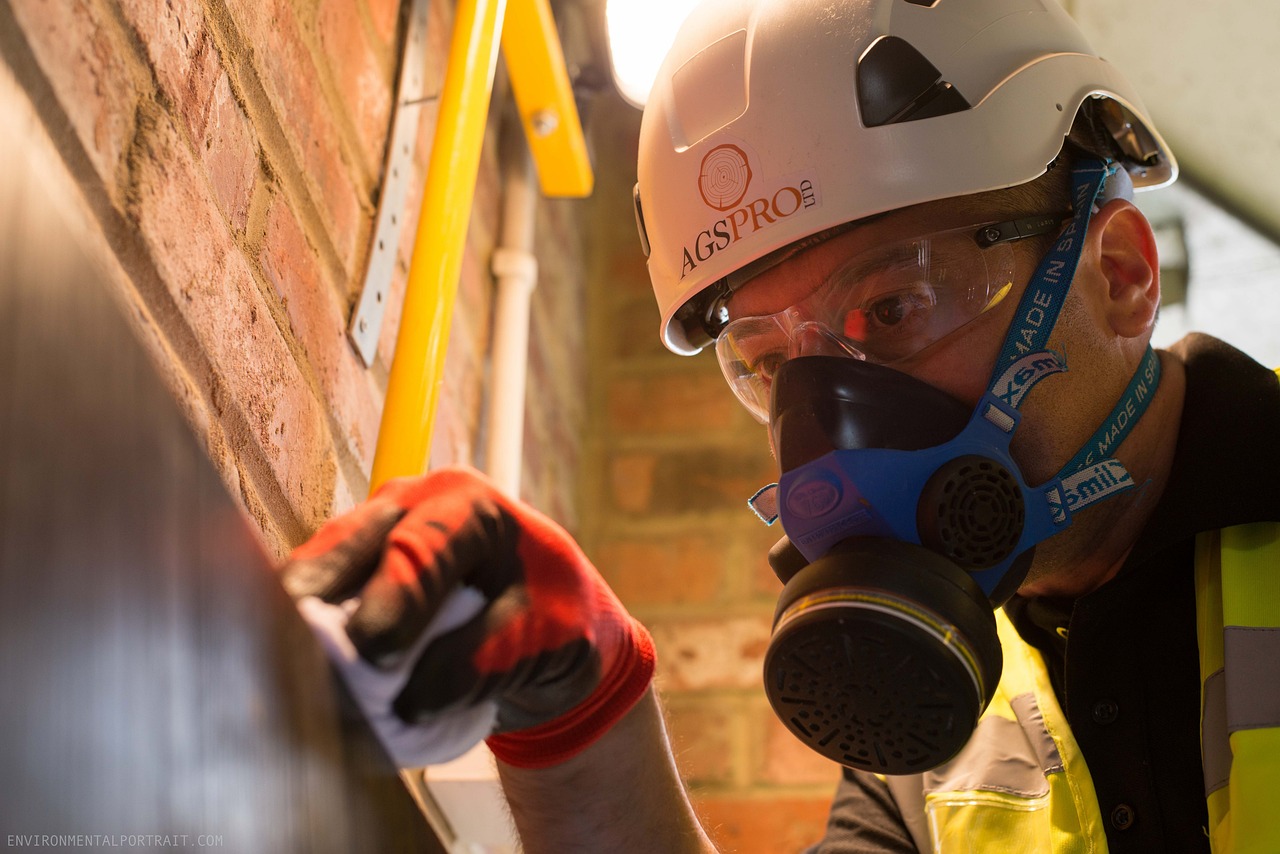A New Approach to Safety - Understanding Human Behavior
In today's fast-paced world, safety is more than just a set of rules or protocols; it’s a culture that needs to be nurtured and understood. The **essence of safety** lies in the **human behavior** that drives actions in various environments, from workplaces to public spaces. By diving deep into the psychology behind these behaviors, we can uncover the hidden motivations and decision-making processes that influence how individuals respond to safety measures. Imagine safety as a dance, where every participant must understand their role and the rhythm of the environment around them. This article will explore how understanding human behavior can enhance safety measures across different settings, focusing on the psychological factors at play, the decision-making processes involved, and the critical importance of communication in fostering a safer culture.
Psychology is the backbone of understanding how individuals perceive and react to safety protocols. It’s fascinating to consider how our **thought patterns** and emotions can shape our behavior, especially in potentially hazardous situations. For instance, when faced with a safety warning, one person might instinctively follow the protocol, while another may dismiss it due to a lack of perceived risk. This discrepancy can often be traced back to psychological principles such as **cognitive biases** and **risk perception**. By recognizing these factors, organizations can tailor their safety measures to align with human behavior, making protocols more effective. Just as a skilled coach understands the strengths and weaknesses of their players, safety leaders must comprehend the psychological landscape of their teams to enhance compliance and reduce incidents.
Effective communication is the linchpin of a successful safety culture. It’s not enough to simply post safety signs or hold meetings; the messages must resonate with employees and be understood at all levels. Think about it: if a message about safety isn’t clear, it’s like trying to navigate a maze without a map. To foster a culture where individuals feel empowered to prioritize safety, organizations should adopt various communication strategies, such as:
- Using **simple language** that everyone can understand.
- Encouraging **open dialogue** about safety concerns.
- Utilizing **visual aids** and demonstrations to enhance understanding.
By ensuring that safety messages are not only delivered but also **embraced**, organizations can cultivate an environment where safety is a shared responsibility. This dialogue creates a sense of community, where everyone feels accountable for their actions and those of their colleagues.
Recognizing behaviors that contribute to unsafe situations is essential for developing targeted interventions. Just as a doctor diagnoses a condition before treatment, organizations must identify risky behaviors to implement effective safety measures. This involves observing the workplace dynamics and understanding how personal and social factors influence actions. By analyzing data and feedback, companies can pinpoint specific risks, allowing them to create tailored strategies that promote safer practices among employees. For instance, if a particular team consistently overlooks safety protocols, a focused intervention can be developed to address the underlying issues, whether they be lack of training, peer pressure, or insufficient communication.
Implementing comprehensive training and educational initiatives can significantly enhance awareness and understanding of safety protocols. These programs equip individuals with the knowledge needed to make informed decisions in critical situations. Think of training as a toolkit; the more tools you have, the better prepared you are to handle unexpected challenges. Organizations should strive to create engaging training sessions that not only inform but also inspire. Incorporating real-life scenarios and interactive elements can help reinforce the importance of safety and encourage employees to take ownership of their actions.
Examining successful case studies of behavioral interventions provides valuable insights into effective strategies that have led to improved safety outcomes in various industries. For example, a manufacturing company that implemented a peer-to-peer safety observation program saw a significant reduction in accidents. Employees were encouraged to observe each other's practices and provide constructive feedback, fostering a culture of accountability and support. These real-world examples illustrate how understanding human behavior can lead to innovative solutions that enhance safety across different settings.
Creating a safety-oriented culture involves engaging employees at all levels and encouraging open dialogue about safety concerns. It’s about building a community where safety is a collective commitment, not just a top-down mandate. When employees feel valued and heard, they are more likely to actively participate in safety initiatives. This can be achieved through regular safety meetings, feedback sessions, and recognition programs that celebrate safe practices. By making safety a shared goal, organizations can cultivate a strong safety culture that permeates every aspect of their operations.
The physical and social environment significantly influences human behavior regarding safety. Just as a well-designed city promotes healthy living, a thoughtfully designed workspace can encourage safe practices. This highlights the need for organizations to consider how their environments are structured and managed. Are there clear pathways for movement? Are safety features easily accessible? By addressing these questions, organizations can create spaces that inherently promote safety and reduce the likelihood of accidents.
Incorporating safety features into workspace design can minimize hazards and encourage safe behavior. This could include ergonomic furniture, clear signage, and accessible emergency exits. Imagine walking into a workspace that feels safe and welcoming; it sets a positive tone for the day. Thoughtful design not only enhances safety but also boosts employee morale and productivity. When individuals feel secure in their environment, they are more likely to focus on their tasks and collaborate effectively with their colleagues.
Understanding how social dynamics, such as peer pressure and group norms, affect safety behavior can inform strategies to foster accountability and encourage positive safety practices within teams. Just as a strong team spirit can drive success in sports, a supportive safety culture can lead to better outcomes in the workplace. Organizations should strive to create an environment where employees feel comfortable discussing safety concerns and supporting one another in following protocols. By leveraging social influences positively, organizations can enhance their safety culture and reduce incidents.
Q: Why is understanding human behavior important for safety?
A: Understanding human behavior helps organizations tailor safety protocols to align with how individuals perceive and react to risks, leading to more effective safety measures.
Q: How can organizations improve communication about safety?
A: Organizations can improve communication by using simple language, encouraging open dialogue, and utilizing visual aids to ensure safety messages are understood.
Q: What role do training programs play in enhancing safety?
A: Training programs equip individuals with the knowledge and skills needed to make informed decisions in critical situations, ultimately enhancing overall safety awareness.
Q: How can the physical workspace influence safety behavior?
A: A well-designed workspace with safety features can minimize hazards and encourage safe behavior, creating an environment that promotes safety.
Q: What are some effective strategies for promoting a safety culture?
A: Engaging employees at all levels, encouraging open dialogue, and recognizing safe practices can help cultivate a strong safety culture within an organization.

The Role of Psychology in Safety
When we think about safety, we often envision hard hats, safety goggles, and strict protocols. However, there’s a deeper layer that significantly influences how we approach safety: psychology. Understanding the psychological principles that govern human behavior can provide invaluable insights into why people react the way they do in potentially hazardous situations. For instance, have you ever wondered why some individuals disregard safety instructions while others follow them diligently? This disparity often boils down to psychological factors such as perception, motivation, and risk assessment.
One of the key aspects of psychology in safety is how individuals perceive risks. People tend to underestimate or overestimate dangers based on their past experiences, knowledge, and even emotions. For example, an employee who has never experienced an accident may believe that safety protocols are unnecessary, while someone who has witnessed a near-miss might adhere strictly to every guideline. This variance in perception can lead to inconsistent safety practices within the same environment, emphasizing the need for tailored safety measures that consider these psychological differences.
Moreover, the decision-making process plays a crucial role in safety. When faced with a risky situation, individuals often rely on heuristics—mental shortcuts that simplify decision-making. While these can be beneficial in some contexts, they can also lead to dangerous oversights. For instance, someone might decide to bypass a safety procedure because they believe "it won’t happen to me." This mindset can be detrimental in high-risk environments where safety protocols are designed to mitigate specific dangers. Therefore, organizations must foster an understanding of these cognitive biases to promote safer decision-making.
Effective communication also hinges on psychological principles. How safety messages are conveyed can significantly impact their reception and adherence. For example, using positive reinforcement instead of fear-based tactics can encourage individuals to engage more actively with safety protocols. When employees feel that their safety is genuinely prioritized and that they are part of a supportive community, they are more likely to comply with safety measures. This creates a proactive safety culture where individuals are motivated to look out for one another.
To illustrate the impact of psychology on safety, consider the following table that outlines common psychological factors and their effects on safety behavior:
| Psychological Factor | Effect on Safety Behavior |
|---|---|
| Risk Perception | Influences whether individuals take safety measures seriously. |
| Cognitive Biases | Can lead to underestimating risks or ignoring safety protocols. |
| Motivation | Higher motivation leads to better compliance with safety measures. |
| Communication Style | Positive messaging fosters a supportive safety culture. |
In conclusion, the intersection of psychology and safety is profound and multifaceted. By understanding how psychological factors influence behavior, organizations can develop more effective safety strategies that not only reduce risks but also promote a culture of safety where everyone feels responsible. This approach not only enhances individual safety but also contributes to the overall well-being of the workplace.
- What is the importance of psychology in safety?
Psychology helps us understand how people perceive risks and make decisions, which is crucial for developing effective safety measures. - How can communication improve safety culture?
Positive and clear communication fosters an environment where individuals feel supported and are more likely to adhere to safety protocols. - What role do cognitive biases play in safety behavior?
Cognitive biases can lead individuals to underestimate risks, making it essential to educate them about these biases to improve safety compliance.

Effective communication is the backbone of any safety initiative. It’s not just about sending messages; it’s about ensuring those messages are understood and acted upon. Imagine a workplace where everyone is aware of the safety protocols, not because they were told to be, but because they truly understand their importance. This is the kind of culture we aim to foster. To achieve this, we must consider various communication strategies that can bridge the gap between safety protocols and employee behavior.
One of the most significant challenges in safety communication is the tendency for messages to get lost in translation. Sometimes, safety protocols are laden with jargon or complex terms that can confuse rather than clarify. Therefore, simplifying language and using clear, concise terms is essential. For instance, instead of saying, “Utilize appropriate personal protective equipment,” we could say, “Always wear your safety gear.” This straightforward approach makes it easier for everyone to grasp the message.
Moreover, incorporating visual aids can dramatically enhance understanding. A picture is worth a thousand words, right? By using infographics, charts, and even videos, organizations can convey safety information in a way that resonates more effectively with employees. Consider this: a poster showing the correct way to lift heavy objects can be much more impactful than a lengthy manual. Visuals not only capture attention but also serve as constant reminders of safe practices.
Another vital aspect of communication is feedback. Encouraging employees to share their thoughts about safety protocols can lead to valuable insights and improvements. This two-way communication fosters a sense of ownership among employees, making them feel that their opinions matter. Regular safety meetings where employees can voice their concerns or suggestions can create an open dialogue that is essential for a proactive safety culture.
Additionally, leveraging technology can significantly enhance communication strategies. Utilizing apps or platforms that allow for real-time reporting of safety issues can empower employees to take immediate action. Imagine a scenario where a worker notices a potential hazard and can alert their supervisor instantly through an app. This not only helps in addressing the issue promptly but also encourages a culture of vigilance and responsibility.
Furthermore, it’s important to tailor communication methods to different groups within the organization. For instance, the way safety information is communicated to new hires should differ from how it’s presented to seasoned employees. New hires may require more detailed explanations and hands-on demonstrations, while experienced personnel might benefit from refreshers or updates on new protocols. This tailored approach ensures that everyone receives the information they need in a manner that resonates with them.
In conclusion, effective communication strategies are pivotal in promoting safety within organizations. By simplifying language, using visual aids, encouraging feedback, leveraging technology, and tailoring messages to various employee groups, we can create a culture where safety is prioritized and understood. The goal is not merely compliance but fostering an environment where safety becomes second nature to everyone.
- Why is communication important for safety? Effective communication ensures that safety protocols are understood and followed, reducing the risk of accidents.
- How can visual aids improve safety communication? Visual aids help convey information quickly and clearly, making it easier for employees to remember safety practices.
- What role does feedback play in safety culture? Feedback encourages employee involvement and can lead to improvements in safety protocols, fostering a proactive safety culture.
- How can technology enhance safety communication? Technology allows for real-time reporting and updates, making it easier for employees to address safety issues promptly.

When it comes to safety, understanding human behavior is crucial. It's not just about having the right equipment or protocols in place; it’s about recognizing the behaviors that lead to unsafe situations. Identifying these behavioral risks is akin to being a detective in a mystery novel, where the clues are often hidden in plain sight. By observing how individuals act in various scenarios, organizations can uncover patterns that may contribute to accidents or unsafe practices.
One of the first steps in identifying behavioral risks is to conduct thorough observations and assessments in the workplace. This involves not just watching what people do, but also understanding why they do it. For example, are employees skipping safety protocols because they feel rushed? Or perhaps they don’t fully understand the importance of the procedures? These insights can help organizations tailor their safety measures to address specific behavioral issues.
Additionally, engaging employees in discussions about their experiences can reveal valuable information. When individuals feel comfortable sharing their thoughts, it opens the door to identifying behaviors that might otherwise go unnoticed. Consider implementing anonymous surveys or focus groups to gather honest feedback about safety practices. This approach not only helps in identifying risks but also fosters a sense of involvement and ownership among employees.
Moreover, it’s essential to recognize that certain environmental factors can influence behavior. For instance, a cluttered workspace might lead to distractions, increasing the likelihood of accidents. By assessing the physical environment and its impact on behavior, organizations can make necessary adjustments to minimize risks. The table below summarizes some common behavioral risks and their potential causes:
| Behavioral Risk | Potential Causes |
|---|---|
| Ignoring Safety Protocols | Lack of understanding, perceived inconvenience, peer influence |
| Rushed Work Practices | High-pressure environment, unrealistic deadlines |
| Inadequate Reporting of Hazards | Fear of repercussions, feeling undervalued |
| Distraction During Tasks | Cluttered workspace, multitasking demands |
By identifying these behavioral risks, organizations can develop targeted interventions that address the root causes rather than merely treating the symptoms. For instance, if employees are skipping safety protocols due to lack of understanding, a comprehensive training program can be implemented. Alternatively, if peer pressure is a significant issue, fostering a culture of safety where individuals feel empowered to speak up can be beneficial.
In conclusion, identifying behavioral risks is a vital step in enhancing safety measures. It requires a proactive approach that combines observation, open communication, and environmental assessment. By understanding the behaviors that contribute to unsafe practices, organizations can create a safer environment for everyone involved.
- What are behavioral risks? Behavioral risks are actions or patterns of behavior that can lead to unsafe situations or accidents in the workplace.
- How can organizations identify these risks? Organizations can identify behavioral risks through observations, employee feedback, surveys, and by assessing the physical environment.
- Why is it important to address behavioral risks? Addressing behavioral risks helps to create a safer work environment, reduces accidents, and promotes a culture of safety.
- What role does communication play in identifying risks? Effective communication encourages employees to share their experiences and concerns, which can reveal hidden behavioral risks.

When it comes to enhancing safety in any environment, training and education programs are the backbone of effective implementation. Imagine walking into a workplace where every employee knows exactly what to do in an emergency. Sounds ideal, right? This level of preparedness doesn’t just happen; it’s cultivated through comprehensive training initiatives that empower individuals with the knowledge they need to make informed decisions in critical situations.
First off, these programs should be designed to be engaging and interactive. Traditional lectures can often lead to disengagement, so incorporating hands-on activities, simulations, and role-playing scenarios can significantly improve retention and understanding. For instance, consider a fire drill: instead of merely discussing the evacuation plan, why not conduct a mock drill that allows everyone to practice the protocol? This not only reinforces the information but also builds confidence among employees.
Moreover, it’s essential to tailor training programs to the specific needs of the organization. Each workplace has its unique set of risks and challenges. Therefore, a one-size-fits-all approach simply won’t cut it. By conducting assessments to identify potential hazards, organizations can develop targeted training that addresses these specific issues. For example, a manufacturing plant may focus on machinery safety, while an office environment might emphasize ergonomic practices and emergency response.
Furthermore, the effectiveness of these training programs can be measured through various methods. Consider implementing pre- and post-training assessments to gauge knowledge retention. This not only provides valuable feedback on the training’s effectiveness but also highlights areas that may require further emphasis. Regular refresher courses can also be beneficial, ensuring that safety protocols remain top-of-mind for all employees.
In addition to formal training, fostering a culture of continuous learning is crucial. Encouraging employees to share their experiences and insights can lead to a more comprehensive understanding of safety practices. This could be facilitated through regular safety meetings or workshops where team members can discuss challenges and brainstorm solutions together. By creating an environment where safety is a shared responsibility, organizations can cultivate a proactive approach to risk management.
To illustrate the potential impact of well-structured training and education programs, let’s take a look at a few key benefits:
| Benefit | Description |
|---|---|
| Increased Awareness | Employees become more conscious of safety protocols, leading to fewer accidents. |
| Enhanced Skills | Staff members gain practical skills that prepare them for emergencies. |
| Improved Morale | A safe work environment boosts employee morale and productivity. |
In conclusion, investing in training and education programs is not just a regulatory requirement; it’s a strategic move that can yield significant dividends in terms of safety and overall workplace culture. By prioritizing these initiatives, organizations can ensure that their employees are not only aware of safety protocols but are also equipped to act decisively when it matters most. Remember, a well-informed employee is the first line of defense against workplace hazards.
- What types of training programs are most effective for safety? Training programs that include hands-on activities, simulations, and tailored content specific to workplace risks tend to be the most effective.
- How often should training be conducted? Regular training sessions, including refresher courses, should be conducted at least annually, with additional sessions as needed based on changes in procedures or personnel.
- Can training programs be customized for different industries? Absolutely! Training programs should be customized to address the unique risks and challenges of each industry for maximum effectiveness.

When it comes to enhancing safety through behavioral interventions, examining real-world case studies can provide valuable insights. These examples not only showcase effective strategies but also highlight the importance of understanding human behavior in safety contexts. One notable case involved a manufacturing plant that faced high rates of workplace accidents. The management decided to implement a behavioral safety program that emphasized observation and feedback. Employees were trained to observe their peers and provide constructive feedback on safety practices. This approach not only increased safety awareness but also fostered a sense of accountability among workers.
Another compelling case study comes from the healthcare sector, where patient safety is paramount. A hospital implemented a program called "Safety Champions," where select staff members were trained to lead safety discussions and encourage their colleagues to speak up about unsafe practices. The results were remarkable; there was a significant reduction in medication errors and adverse events, showcasing how empowering individuals can lead to a safer environment.
In the construction industry, a company faced challenges with compliance to safety protocols on-site. They introduced a behavioral intervention that involved daily safety huddles where workers discussed potential hazards and shared their experiences. This initiative not only improved communication but also created a culture of safety where everyone felt responsible for their own and their colleagues' well-being. The result? A noticeable decline in accidents and injuries.
These case studies underline the effectiveness of behavioral interventions in promoting safety. By focusing on human behavior, organizations can tailor their safety programs to address specific risks and foster a culture of safety. Below is a summary of the key takeaways from these case studies:
| Industry | Intervention | Results |
|---|---|---|
| Manufacturing | Peer Observation and Feedback | Increased safety awareness and accountability |
| Healthcare | Safety Champions Program | Reduced medication errors and adverse events |
| Construction | Daily Safety Huddles | Decline in accidents and injuries |
In conclusion, these case studies illustrate that understanding and addressing human behavior through targeted interventions can lead to significant improvements in safety outcomes. Organizations that prioritize behavioral safety not only create safer environments but also empower their employees to take an active role in maintaining safety standards.
- What are behavioral interventions? Behavioral interventions are strategies designed to change people's behaviors in order to improve safety and reduce risks.
- Why are case studies important in understanding safety interventions? Case studies provide real-world examples of successful interventions, helping organizations learn from others' experiences and apply similar strategies effectively.
- How can organizations implement behavioral interventions? Organizations can implement behavioral interventions by training employees, fostering open communication, and creating accountability systems that encourage safe practices.

This article explores how understanding human behavior can enhance safety measures in various environments, focusing on psychological factors, decision-making processes, and the importance of communication in promoting a safer culture.
Psychological principles play a crucial role in understanding how individuals perceive and react to safety protocols, influencing their behavior and decision-making in potentially hazardous situations.
Effective communication is vital for ensuring that safety messages are understood and acted upon, fostering a culture where individuals feel empowered to prioritize safety in their actions.
Recognizing behaviors that contribute to unsafe situations is essential for developing targeted interventions, allowing organizations to address specific risks and promote safer practices among employees.
Implementing training and educational initiatives can significantly enhance awareness and understanding of safety protocols, equipping individuals with the knowledge needed to make informed decisions in critical situations.
Examining successful case studies of behavioral interventions provides valuable insights into effective strategies that have led to improved safety outcomes in various industries.
Creating a safety-oriented culture is not just about implementing rules; it’s about fostering an environment where safety becomes a shared value among all employees. When individuals feel that their safety concerns are heard and valued, they are more likely to engage in safe practices actively. Imagine walking into a workplace where every employee, from the CEO to the newest intern, is committed to looking out for one another. This sense of community can dramatically reduce accidents and incidents.
To promote such a culture, organizations should focus on a few key strategies:
- Encouraging Open Dialogue: Create channels for employees to voice their concerns and suggestions regarding safety. Regular meetings and anonymous surveys can be effective tools.
- Recognizing Safe Behavior: Celebrate individuals and teams who demonstrate exemplary safety practices. This recognition can motivate others to follow suit, reinforcing the importance of safety in the workplace.
- Leadership Involvement: Leaders should actively participate in safety initiatives, demonstrating their commitment. When employees see their leaders prioritizing safety, they are more likely to adopt similar attitudes.
Moreover, it’s essential to integrate safety into the organizational values. This means that safety should be part of the company’s mission statement and reflected in its daily operations. By embedding safety into the core of the organization, it becomes a natural part of the work culture rather than an afterthought.
In conclusion, promoting a safety culture is a continuous journey that requires the dedication of everyone involved. It’s about creating an environment where safety is not just a set of rules but a way of life. When employees feel empowered and supported in their safety efforts, they contribute to a more secure and productive workplace for everyone.
The physical and social environment significantly influences human behavior regarding safety, highlighting the need for thoughtful design and management of spaces to promote safe practices.
Incorporating safety features into workspace design can minimize hazards and encourage safe behavior, demonstrating the importance of ergonomics and safety considerations in planning and construction.
Understanding how social dynamics, such as peer pressure and group norms, affect safety behavior can inform strategies to foster accountability and encourage positive safety practices within teams.
- What is a safety culture? A safety culture is an organizational culture that places a high value on safety and encourages proactive safety behaviors among employees.
- How can I contribute to a safety culture at work? You can contribute by voicing safety concerns, participating in safety training, and modeling safe behaviors for your colleagues.
- Why is communication important for safety? Effective communication ensures that safety messages are understood, leading to better compliance and a stronger commitment to safety practices.

The physical and social environment plays a pivotal role in shaping human behavior, especially when it comes to safety. Imagine walking into a workspace that is cluttered, poorly lit, and disorganized. Instinctively, you might feel uneasy, and your mind may begin to race with thoughts of potential hazards lurking around every corner. This scenario highlights how our surroundings can significantly influence our perception of safety and, consequently, our actions. In contrast, a well-designed environment can promote a sense of security and encourage individuals to adhere to safety protocols.
Research has shown that environments can either facilitate or hinder safe behaviors. For instance, a workplace with clear signage, organized pathways, and accessible safety equipment fosters a culture of safety. Conversely, environments that lack these elements can lead to confusion and risky behaviors. It's essential to recognize that the design and management of spaces are not just about aesthetics; they are integral to ensuring safety. This is where the concept of environmental psychology comes into play, as it examines how our surroundings affect our thoughts, feelings, and behaviors.
One key aspect of the environmental influence on behavior is ergonomics. Ergonomically designed workspaces can minimize physical strain and reduce the likelihood of accidents. For example, adjustable desks and chairs can help maintain proper posture, which not only enhances comfort but also decreases the risk of injury. A well-structured environment encourages employees to engage in safe practices almost unconsciously. When individuals feel supported by their surroundings, they are more likely to prioritize safety in their decision-making processes.
Moreover, the social environment significantly impacts behavior. Social dynamics such as peer pressure, group norms, and leadership can either promote or undermine safety practices. For instance, if a team member consistently disregards safety protocols, others may feel inclined to follow suit, believing that it's acceptable behavior. On the flip side, a culture that celebrates safe practices and holds individuals accountable can create a ripple effect, encouraging everyone to prioritize safety. This is why fostering open communication about safety concerns is crucial. When employees feel comfortable discussing safety issues, it cultivates an atmosphere of trust and collective responsibility.
To illustrate the impact of the environment on behavior, consider the following table that summarizes key factors:
| Environmental Factor | Impact on Behavior |
|---|---|
| Workspace Design | Influences comfort and reduces hazards |
| Signage and Communication | Enhances understanding of safety protocols |
| Social Dynamics | Affects adherence to safety norms |
| Accessibility of Safety Equipment | Encourages proactive safety measures |
In conclusion, the impact of the environment on behavior cannot be overstated. By thoughtfully designing spaces and fostering a supportive social atmosphere, organizations can create a culture that prioritizes safety. It's not just about having the right policies in place; it's about ensuring that the environment itself encourages safe practices. As we move forward, it's essential to consider how our surroundings shape our actions and to strive for environments that promote the well-being of all individuals.
- How can workspace design improve safety?
Well-designed workspaces minimize hazards, promote comfort, and encourage safe behaviors. - What role does communication play in safety?
Effective communication ensures that safety messages are understood and acted upon, fostering a culture of safety. - How do social dynamics influence safety behavior?
Peer pressure and group norms can either promote or undermine adherence to safety protocols. - What is environmental psychology?
It studies how our surroundings affect our thoughts, feelings, and behaviors, particularly concerning safety.

When we think about safety in the workplace, the design of our surroundings plays a pivotal role. Imagine walking into an office where everything is meticulously arranged to minimize risks; it’s not just a dream but a reality that can be achieved through thoughtful workspace design. The layout, furniture, and even the colors of the walls can influence how safe we feel and behave in our environment. By incorporating safety features into the design, we can create spaces that not only protect employees but also promote productivity and well-being.
First off, consider ergonomics—the science of designing the workplace to fit the user. Ergonomically designed workspaces can significantly reduce the risk of musculoskeletal disorders, which are common in many industries. For example, adjustable desks and chairs that support proper posture can make a world of difference. When employees are comfortable, they are more likely to stay focused on their tasks rather than being distracted by discomfort or pain. This is where a well-thought-out design can lead to a happier, healthier workforce.
Moreover, the layout of the workspace should facilitate safe movement. Clear pathways, well-placed emergency exits, and accessible safety equipment are essential elements that can prevent accidents. For instance, if a fire breaks out, employees should be able to evacuate quickly without obstacles in their way. A well-designed workspace not only enhances safety but also fosters a sense of security among employees, allowing them to concentrate on their work without the constant worry of potential hazards.
Lighting is another critical factor in workspace design. Proper lighting can reduce accidents and improve mood and productivity. Poorly lit areas can lead to trips and falls, while well-lit spaces enhance visibility and alertness. Natural light, when possible, should be maximized, as it has been shown to improve overall employee satisfaction and health. So, when designing safe workspaces, consider the impact of light on both safety and productivity.
Additionally, integrating safety technology can further enhance the safety of a workspace. For example, installing automatic sensors for fire alarms and smoke detectors can provide early warnings and prevent disasters. Furthermore, using surveillance cameras can deter unsafe behaviors and encourage accountability among employees. These technologies not only protect the physical space but also create a culture of safety where everyone is aware of their responsibilities.
In summary, designing safe workspaces is not just about compliance with safety regulations; it’s about creating an environment that prioritizes the well-being of its occupants. By focusing on ergonomics, layout, lighting, and technology, organizations can cultivate a workspace that fosters safety and productivity. After all, when employees feel safe, they are empowered to perform at their best.
- What are the key elements of a safe workspace? A safe workspace should include ergonomic furniture, clear pathways, adequate lighting, and integrated safety technologies.
- How can I improve safety in my current workspace? Evaluate your current layout, ensure proper lighting, and consider ergonomic adjustments to furniture. Also, incorporate safety signage and equipment.
- Why is ergonomics important in workspace design? Ergonomics helps to reduce discomfort and injuries, leading to improved productivity and overall employee satisfaction.
- What role does technology play in workplace safety? Technology can enhance safety through monitoring systems, emergency alerts, and automated safety equipment, creating a proactive safety culture.

When it comes to safety behavior in the workplace, it's not just about individual choices; it's also about the social dynamics at play. Have you ever noticed how your actions can change when you're in a group versus when you're alone? This phenomenon is known as social influence, and it can significantly impact how safety protocols are followed. For instance, if a group of employees regularly skips wearing safety gear because "everyone else is doing it," this behavior can quickly become the norm, leading to a culture where safety is compromised.
One of the most powerful forces in shaping behavior is peer pressure. It's fascinating to think about how much we are influenced by those around us. In a work environment, if a few individuals consistently disregard safety measures, it creates a ripple effect. Others may feel pressured to conform, even if they understand the risks involved. This highlights the importance of fostering a work culture where safety is prioritized and where employees feel empowered to speak up against unsafe practices.
Moreover, the concept of group norms plays a crucial role in safety behavior. When teams establish clear expectations around safety, it can lead to a collective commitment to maintaining a safe environment. For example, if a team regularly discusses safety during meetings and celebrates safe practices, it nurtures an atmosphere where everyone feels responsible for upholding safety standards. This communal approach not only reinforces positive behavior but also encourages individuals to hold each other accountable.
To illustrate the impact of social influences on safety behavior, consider the following table that summarizes key factors:
| Factor | Description | Impact on Safety Behavior |
|---|---|---|
| Peer Pressure | The influence exerted by a peer group encouraging conformity. | Can lead to risky behaviors if safety protocols are not followed by the majority. |
| Group Norms | Shared beliefs or behaviors that are accepted as the standard within a group. | Positive norms can enhance safety compliance, while negative norms can undermine it. |
| Leadership Influence | The role of leaders in modeling safety behavior. | Strong leadership can promote a culture of safety, encouraging employees to follow suit. |
To combat negative social influences, organizations can implement strategies that promote positive interactions among employees. For instance, creating opportunities for team-building activities focused on safety can strengthen relationships and encourage open discussions about safety concerns. By fostering an environment where employees feel safe to express their thoughts, organizations can mitigate the risks associated with social influences on safety behavior.
In conclusion, understanding the social influences on safety behavior is vital for creating a safer workplace. By recognizing how peer pressure and group norms shape actions, organizations can develop targeted strategies that promote accountability and encourage a culture of safety. After all, when everyone is on board and committed to safety, the entire organization benefits.
- What are social influences on safety behavior? Social influences refer to the effects that peers, group norms, and leadership have on individual safety practices.
- How can organizations encourage positive safety behavior? Organizations can encourage positive behavior by fostering open communication, establishing clear safety norms, and promoting teamwork around safety initiatives.
- What role does leadership play in safety culture? Leadership plays a crucial role by modeling safe behaviors, setting expectations, and encouraging a culture where safety is prioritized.
Frequently Asked Questions
- How does understanding human behavior enhance safety measures?
Understanding human behavior is like having a roadmap to navigate through the complexities of safety. When we grasp the psychological factors that influence decision-making, we can tailor safety protocols that resonate more with individuals. This leads to better compliance and a proactive approach to safety, ultimately creating a safer environment for everyone.
- What role does communication play in promoting safety?
Effective communication is the glue that holds safety initiatives together. When safety messages are clear and relatable, individuals are more likely to understand and act upon them. Open dialogue fosters a culture where everyone feels empowered to voice concerns, which is crucial for maintaining a safe workplace.
- How can organizations identify behavioral risks?
Identifying behavioral risks is like shining a light on hidden dangers. Organizations can conduct observations, surveys, and analyze incident reports to pinpoint behaviors that lead to unsafe situations. By addressing these specific risks, targeted interventions can be developed to promote safer practices among employees.
- What are effective training and education programs for safety?
Effective training programs are interactive and engaging, making safety protocols memorable. They should include real-life scenarios, hands-on activities, and continuous feedback to ensure that individuals not only understand the protocols but can also apply them in critical situations.
- Can you provide examples of successful behavioral interventions?
Absolutely! Many organizations have implemented behavioral interventions that led to significant safety improvements. For instance, a manufacturing company introduced peer-led safety discussions, which resulted in a notable decrease in accidents. These case studies highlight the importance of involving employees in safety initiatives.
- What does it mean to promote a safety culture?
Promoting a safety culture is about creating an environment where safety is everyone's responsibility. It involves engaging employees at all levels, encouraging them to share safety concerns, and fostering a collective commitment to maintaining a safe workplace. It’s like building a safety net where everyone plays a part in keeping each other safe.
- How does the environment impact safety behavior?
The environment can either support or hinder safe behavior. Thoughtful design can minimize hazards and encourage safe practices, such as using ergonomic furniture to reduce strain or ensuring proper lighting in workspaces. By designing spaces with safety in mind, organizations can promote a culture of safety effortlessly.
- What are some design considerations for safe workspaces?
When designing safe workspaces, consider factors like layout, accessibility, and natural light. Incorporating safety features such as non-slip floors, clear signage, and ergonomic workstations can significantly reduce risks. It’s all about creating a space that naturally encourages safe behavior.
- How do social influences affect safety behavior?
Social dynamics, such as peer pressure and group norms, can greatly influence safety behavior. When team members hold each other accountable for safety practices, it fosters a culture of responsibility. Understanding these social influences helps organizations implement strategies that encourage positive safety practices within teams.



















